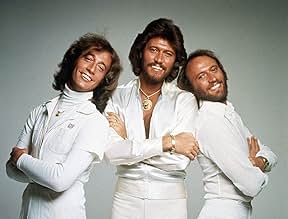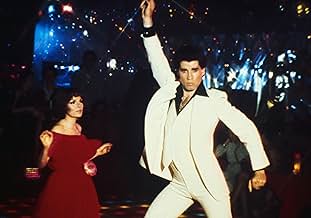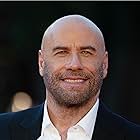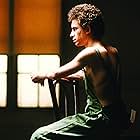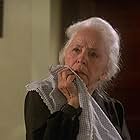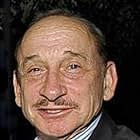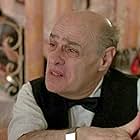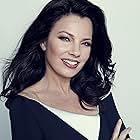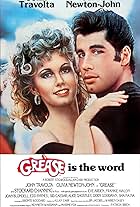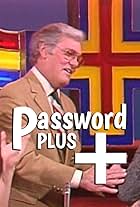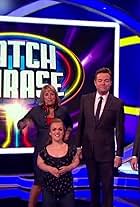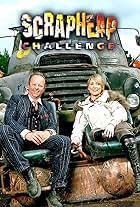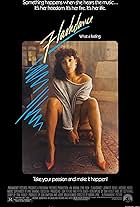Anxious about his future after high school, a 19-year-old Italian-American from Brooklyn tries to escape the harsh reality of his bleak family life by dominating the dance floor at the local... Read allAnxious about his future after high school, a 19-year-old Italian-American from Brooklyn tries to escape the harsh reality of his bleak family life by dominating the dance floor at the local disco.Anxious about his future after high school, a 19-year-old Italian-American from Brooklyn tries to escape the harsh reality of his bleak family life by dominating the dance floor at the local disco.
- Nominated for 1 Oscar
- 6 wins & 14 nominations total
Sam Coppola
- Dan Fusco
- (as Sam J. Coppola)
Robert Costanzo
- Paint Store Customer
- (as Robert Costanza)
- Director
- Writers
- All cast & crew
- Production, box office & more at IMDbPro
Storyline
Did you know
- TriviaJohn Travolta had worked hard on the "You Should Be Dancing" sequence and threatened to quit the film when the studio suggested it should be shot in close-up instead of full-body.
- GoofsWhen Tony is walking with Stephanie to get coffee, a girl's scream is heard. A group of girls was watching them film the scene and they would scream when they saw John Travolta.
- Quotes
Tony Manero: Would ya just watch the hair. Ya know, I work on my hair a long time and you hit it. He hits my hair.
- Crazy creditsWhen the title appears on screen, it is done in the style of a neon sign. The word "Fever" is blinking.
- Alternate versionsIn 2002, AMC (American Movie Classics) showed a new print of 'Fever' with scenes not in the theatrical release nor home version:
- 1) After Tony's first night at the disco, he and his buddies cruise the bridge, where the song 'Jive Talkin'' can be heard in the background. He gets out of the car, and begins to caress the bridge's structure with his fingertips.
- 2) After asking Doreen to dance, Tony and Doreen dance to 'Disco Duck'.
- 3) Tony takes Stephanie back to her Bay Ridge home, where they kiss in the car.
- 4) Tony signs for a telegram that tells his father has been asked to go back to work.
- 5) After getting out of the subway, Tony buzzes Stephanie's apartment building.
- ConnectionsFeatured in Les rendez-vous du dimanche: Episode dated 16 April 1978 (1978)
- SoundtracksHow Deep Is Your Love
Courtesy of RSO Records, Inc., Stigwood Music, Inc. (Unichappell Music, Inc.) BMI and Bros. Gibb, B.V.
Written by Barry Gibb, Robin Gibb and Maurice Gibb
Performed by The Bee Gees
Featured review
Although it may seem dated and cheesy to some viewers today Saturday Night Fever remains one of the most underrated examples of '70s pop-culture. It is undoubtedly the quintessential dance flick and remains one of the most entertaining films of all-time. Yet, behind all the music and entertaining aura you are actually viewing a drama studying the American class system and young rebellion. Though at times it is slightly exaggerated, it still manages to capture a vast amount of authenticity and ultimately the sights and sounds of the time.
Saturday Night Fever follows self-proclaimed "dance king" Tony Manero (John Travolta) and his love of dancing and the trials and tribulations of his life in the Bronx. He soon meets an arrogant fellow dancer named Stephanie Mangano (Karen Lynn Gorney). Quickly becoming attracted and influenced by the women he starts questioning the way he lives his life.
The film is not always upbeat and at times can be depressing, particularly the scenes depicting peer-pressure. Although both have their differences, both are very alike and ultimately want to be something "big". There are also the elements of jealously, rivalry, religion, rebellion, respect and racism added into the film. This captures the realism of the time and with more accuracy and honesty than a lot of films. Just take a look at the brief scene where Tony is on the tube, this is an oddly poignant, effecting and compelling scene presenting Tony's confused emotions.
Saturday Night Fever still carries the vibe, rhythm and atmosphere it did back in '77. It remains one of the most influential films for both the film-world and pop-culture. Infamously holding some of the greatest dance sequences ever committed film; you can feel the energy, emotions, time and determination that were spent perfecting the dance scenes to the finest detail. The lighting is perfect at creating the "disco world", the set-piece of the 2001 Disco is one of the film's many iconic highlights.
John Travolta dedicates himself to his dancing and character, fitting the role with a graceful ease. The film goes into depth at studying characters too, it shows how desperate everyone is to fit in and be able to make an impressive image. The fantastic shots on character's feet show the "strut" in their walk, representing their desire to maintain their reputation of being "cool". All the characters want to be something, while a lot of them will never add up to anything due to their working-class backgrounds. There are a fair amount of American social-comments scattered throughout the film and retaining a surprising amount of intelligent value.
The gloriously groovy and funky soundtrack is possibly the film's finest element. The music accompanies the dance sequences with an amazing amount of memorably robust imagery. The use of The Bee Gees' music is wonderful to listen to and also for helping to create an ambiguous atmosphere of love, drugs and sex. The shooting techniques in the disco are magnificent for filming the dance scenes and fit perfectly alongside the other technical elements.
Saturday Night Fever is a far more professional film than one might expect, it has intelligence as well as entertainment, which is something that makes a more than just admirable achievement. It is a truly remarkable triumph and a film that deserves more appreciation than it gets.
Saturday Night Fever follows self-proclaimed "dance king" Tony Manero (John Travolta) and his love of dancing and the trials and tribulations of his life in the Bronx. He soon meets an arrogant fellow dancer named Stephanie Mangano (Karen Lynn Gorney). Quickly becoming attracted and influenced by the women he starts questioning the way he lives his life.
The film is not always upbeat and at times can be depressing, particularly the scenes depicting peer-pressure. Although both have their differences, both are very alike and ultimately want to be something "big". There are also the elements of jealously, rivalry, religion, rebellion, respect and racism added into the film. This captures the realism of the time and with more accuracy and honesty than a lot of films. Just take a look at the brief scene where Tony is on the tube, this is an oddly poignant, effecting and compelling scene presenting Tony's confused emotions.
Saturday Night Fever still carries the vibe, rhythm and atmosphere it did back in '77. It remains one of the most influential films for both the film-world and pop-culture. Infamously holding some of the greatest dance sequences ever committed film; you can feel the energy, emotions, time and determination that were spent perfecting the dance scenes to the finest detail. The lighting is perfect at creating the "disco world", the set-piece of the 2001 Disco is one of the film's many iconic highlights.
John Travolta dedicates himself to his dancing and character, fitting the role with a graceful ease. The film goes into depth at studying characters too, it shows how desperate everyone is to fit in and be able to make an impressive image. The fantastic shots on character's feet show the "strut" in their walk, representing their desire to maintain their reputation of being "cool". All the characters want to be something, while a lot of them will never add up to anything due to their working-class backgrounds. There are a fair amount of American social-comments scattered throughout the film and retaining a surprising amount of intelligent value.
The gloriously groovy and funky soundtrack is possibly the film's finest element. The music accompanies the dance sequences with an amazing amount of memorably robust imagery. The use of The Bee Gees' music is wonderful to listen to and also for helping to create an ambiguous atmosphere of love, drugs and sex. The shooting techniques in the disco are magnificent for filming the dance scenes and fit perfectly alongside the other technical elements.
Saturday Night Fever is a far more professional film than one might expect, it has intelligence as well as entertainment, which is something that makes a more than just admirable achievement. It is a truly remarkable triumph and a film that deserves more appreciation than it gets.
- Det_McNulty
- Mar 19, 2007
- Permalink
Details
- Release date
- Country of origin
- Languages
- Also known as
- Fiebre de sábado por la noche
- Filming locations
- 86th Street, Brooklyn, New York City, New York, USA(opening sequence: Tony's Walk)
- Production companies
- See more company credits at IMDbPro
Box office
- Budget
- $3,000,000 (estimated)
- Gross US & Canada
- $94,213,184
- Opening weekend US & Canada
- $3,878,099
- Dec 18, 1977
- Gross worldwide
- $237,113,184
- Runtime1 hour 58 minutes
- Color
- Sound mix
- Aspect ratio
- 1.85 : 1
Contribute to this page
Suggest an edit or add missing content








